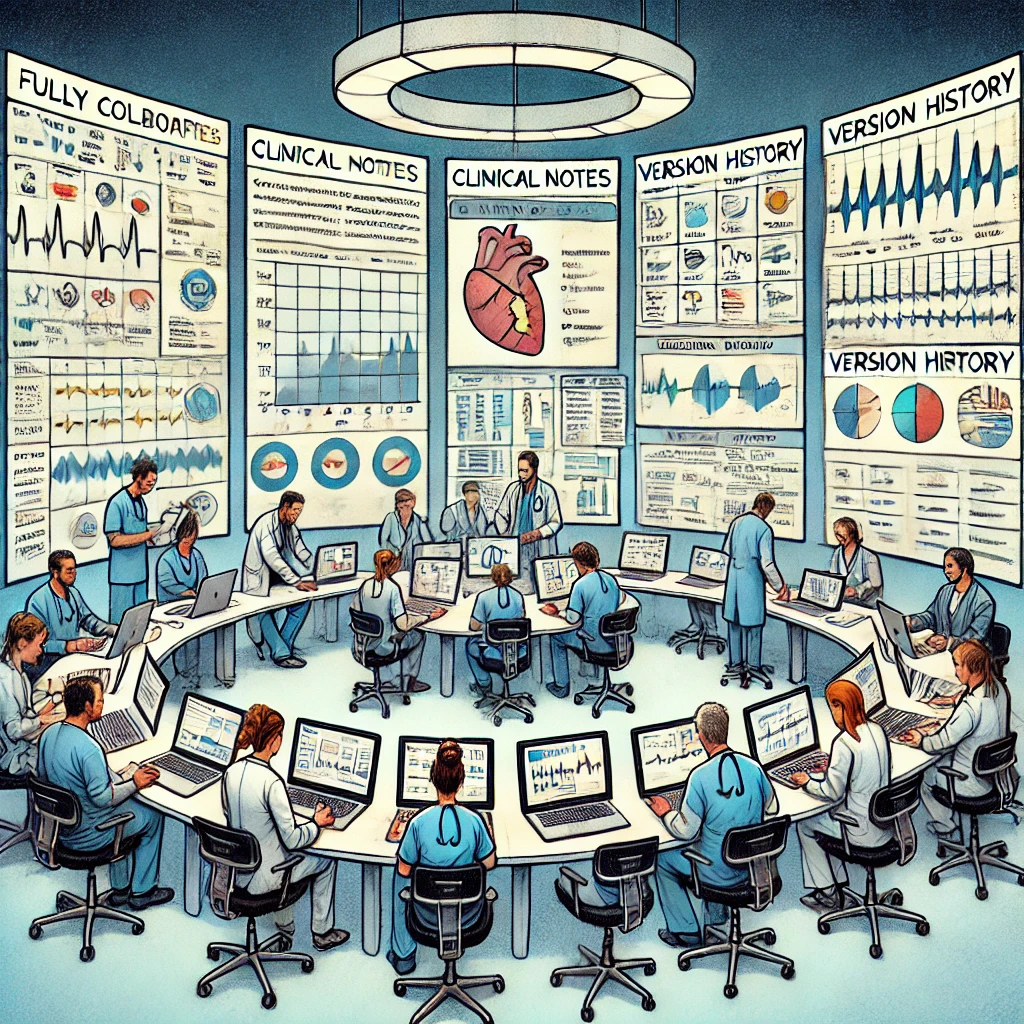
Insights from the Front Lines of Medical Documentation
We explore the root causes of information chaos, designing for clarity, and the thoughtful application of AI in medicine.

Why Clinicians Copy-Paste: Designing for Persistence, Not Duplication
Clinicians aren’t copy-pasting out of laziness. They’re trying to preserve clinical context that still matters. In this post, we explore how our research into duplication in the EHR led us to rethink documentation persistence and build Problem Link, a feature that keeps medical problems connected over time.

When the Chart Comes Up Empty
Sometimes the chart isn’t too full—it’s too empty. When key clinical information is missing, clinicians are forced to piece together the story themselves. In this post, we explore how information underload slows care, increases risk, and contributes to burnout—and how Stream helps preserve continuity over time.

Too Much Information, Too Little Time
Information overload is more than a nuisance—it’s a major contributor to clinical burnout. When alerts, messages, and chart clutter pile up without prioritization, cognitive load skyrockets. In part two of our Information Chaos series, we break down how overload disrupts clinical reasoning—and what we’re doing about it.

“I Know I’ve Seen This Before”: How Information Scatter Drives Clinician Burnout
Information scatter is when relevant clinical data is present—but spread across inboxes, scanned faxes, old notes, and your memory. It forces clinicians to reconstruct the story over and over, increasing cognitive load and driving burnout. Here’s why it happens—and how we can fix it.


Drowning in Documentation: The Cognitive Overload of Clinical Notes
Clinical documentation is no longer a tool for clarity—it’s a source of mental overload.
Today’s EHRs bury clinicians in duplicated notes, fragmented interfaces, and templated noise. The result? Slower decisions, missed signals, and mounting burnout. This week, we explore how cognitive overload is quietly eroding care quality—and what a better future could look like if documentation supported clinical thinking instead of sabotaging it.

The Real Cost of Note Bloat: Clinical Clarity at Risk
Medical documentation is a clinical act, not just a clerical task. Learn why note bloat undermines patient care and how clinicians can rebuild clean, useful, clinically-driven notes through thoughtful, evidence-informed practices.


Why EHRs Actively Constrain Ideal Clinical Workflows
The rigidity of the EHR is a straightjacket on efficient workflows. The systems simply don’t match the ways clinicians think.

Rethinking Administrative Time and the EHR in Modern Medicine
The EHR suffers from the tragedy of the commons. Everyone dumps their data with little thought to organization or cleaning up after themselves. We need to buy tools that facilitate information stewardship not data littering.

Why EHRs Are Causing “Note Bloat”—And How We Can Fix It
It’s time to rethink documentation to avoid “note bloat” and bring focus back to what really matters in patient care.

The Challenges of Information Review in Primary Care
Ideally, clinicians shouldn’t need to search for or surface information at all—because the information should never be lost to begin with. There are several chart review work flows prevalent in primary care, yet EHRs are not built to support them, or the workflows of any clinicians, beyond search and filter.

The Danger of Pre-Templated Information in Medical Records
Templating notes, exams, care plans, and histories can be bad for patient care, even if it's good for clinician efficiency. Clinical documentation ought to accurately reflect the hard work clinicians put into their care. Fortunately, large language models can help build better documentation that is reflective of the vibrancy of the patients they describe.

Prevalence and Sources of Duplicate Information in the Electronic Medical Record
The prevalence of information duplication (copy-paste) in electronic medical records (EMRs) suggests that it is an adaptive behavior requiring further investigation so that improved documentation systems can be developed.

A Fully Collaborative, Noteless Electronic Medical Record Designed to Minimize Information Chaos: Software Design and Feasibility Study
We propose and build a prototype of the world's first noteless electronic health record, which is built to optimize collaboration and minimize information chaos.

Beyond Notes: Why It Is Time to Abandon an Outdated Documentation Paradigm
The medical chart—including notes, labs, and imaging results—should be reconceptualized as a dynamic, fully collaborative workspace organized by topic rather than time, writer, or data type. This will lead to better clinical outcomes and higher job satisfaction among clinicians, who will suffer less with decreased cognitive burden.

A Web Application for Adrenal Incidentaloma Identification, Tracking, and Management Using Machine Learning
Incidental findings are a common medical problem that are prone to falling through the cracks of the medical system. Building safety net systems to identify, track, and to help manage these potentially dangerous findings can decrease the cognitive burden on physicians and lead to better outcomes for patients. In this manuscript, we present a software system designed to identify adrenal incidentalomas and track them over time.

